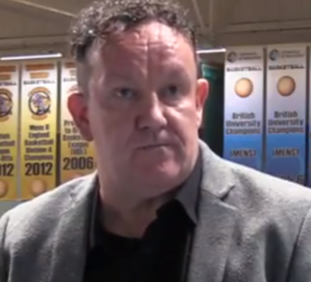
The Association for Physical Education Interview


Who are you and who are afPE?
The Association for Physical Education (afPE) is the only PE subject association in the UK. We are committed to being the representative agency of choice for people and organisations delivering or supporting the delivery of Physical Education, school sport and physical activity (PESSPA) in educational contexts and in the wider community.
The following interview was conducted with the Steven Caldecott, the Health and Safety Lead for the Association for Physical Education.
How do you help school PE departments and what services do you provide?
We offer a range of services. Examples include health and safety advice, employment support, professional learning, membership, termly journals, insurance and reward offers on discounted services such as gym membership.
Who is responsible for safety in school PE?
Everyone is responsible for safety in school PE.
Health and safety statute, supported by civil case law, places ultimate responsibility for health and safety on the employer. This includes the duties to:
Have a written Health and Safety Policy.
Initiate procedures to ensure satisfactory implementation of the policy and regular reviews (at least annually, but also following any incidents).
Provide a safe place of work.
Assess and manage the risks of all activities.
Inform employees of measures to make situations safe.
Provide training and supervision, where appropriate.
Monitor implementation of the procedures.
Why is health and safety important in PE?
Effective health and safety practices are integral to good management. Head Teachers have a responsibility for everything over which they have control. This includes all day-to-day health and safety issues within and outside the curriculum, including weekends and during the holidays, where activities are organised by the school.
What are PE staff required to do in terms of health and safety?
Heads of Physical Education, subject leads and other staff members are likely to have aspects of these responsibilities delegated to them. As employees, they are required to:
Take reasonable care of the health and safety of themselves and others.
Cooperate with the employer on health and safety issues.
Know and apply the employer’s policy for health and safety, and incorporate this into PESSPA policy.
Carry out their work as directed by the school leadership team.
Report any concerns about health and safety.
Do what is within their power to prevent further injury from reported concerns.
Not place themselves or others at risk (such as students and colleagues).
Ensure they do not interfere with or misuse items for health and safety, such as fire extinguishers or safety signs.
Participate in safety inspections.


What would you say are the main issues facing PE in schools?
In primary schools, one of the main issues is the appropriate use of the PE and Sport Premium funding. It should be used to make additional and sustainable improvements to the provision of PE and sport, for the benefit of primary-aged pupils to encourage the development of healthy, active lifestyles.
At secondary level, Physical Educationalists are facing the major issue of losing time to deliver the subject. PE remains statutory at all key stages and it is important that every student receives their entitlement and develops their knowledge, skills and attitudes in this important and unique area of the curriculum.
Have cuts to funding in schools impacted PE safety?
PE funding at primary level actually doubled in Autumn 2017. State schools now receive £16,000 plus £10 per pupil each year to specifically develop all aspects of PE including health and safety. This funding is ring fenced so it is important it stays in the right hands!
How do you advise teachers to manage students with medical conditions which affect them physically within delivering PE?
There is a widespread agreement that physical activity brings benefits to all who participate. The Equality Act 2010 makes clear that schools must make reasonable adjustments to enable a student to access a full a programme of education, including PE, as possible. The student's education, health and care plan should consider what would help the individual to access Physical Education, School Sport and Physical Activity (PESSPA). This plan should be developed by consulting the student, parents, teachers, support staff, physiotherapists and medical staff. The outcomes of the plan should focus on ability, i.e. what the student can do.
The teacher should enable safe participation and inclusion, this will likely be through a range of teaching styles and tasks varied according to need. Good practice will be about progression, challenge and appropriate supervision. Ad hoc provision from week to week does not constitute satisfactory provision.
In the latest Safe Practice book there is a chapter on SEND and medical conditions. A new addition to the book is a table detailing a number of specific conditions that might present. It is designed to assist teachers and support safe inclusive practice.
What are the most common mistakes you see/hear of in school PE?
Sometimes schools can be risk averse because they are afraid of litigation. Well planned and effectively assessed programmes with well qualified, confident staff should allow schools to feel confident that they are providing sufficient challenge for pupils and they should not become risk averse.
Some schools assume that coaching cover is the solution for to effective PE and sport provision, rather than using such expertise to supplement their programme and up-skill their own staff, which is a far more effective approach.
How important is regular staff training for maintaining safety standards in school PE?
It is vital that staff undertake regular training to remain current and compliant. Your school will offer regular safeguarding training, including Prevent to tackle radicalisation, but it is also important that staff appreciate current best practice in PE and sport. The afPE Safe Practice guidance is an essential resource for school/practitioners and everybody should ensure they hold the 2016 edition. It is recommended that staff undertake training in safe practice for PE and sport every three years or at least after a new edition of the guidance is published (typically every four years).
Can you give three tips to help schools make PE safer?
1. Good teaching is safe teaching.
2. Ensure that you are well supported with health and safety advice including ensuring you have the latest copy of Safe Practice in PE, School Sport and Physical Activity, and joining the Association for Physical Education to ensure you have access to regular updates and personal expertise to answer your bespoke questions.
3. Carry out risk assessments for your school activity and involve all key personnel in this process. In addition keep up to date with latest best practice including by attending Safe Practice training which is provided through afPE.






Office 27, East Moons Moat Business Centre
Oxleasow Rd, Redditch B98 0RE
Phone: 0333 207 0737


